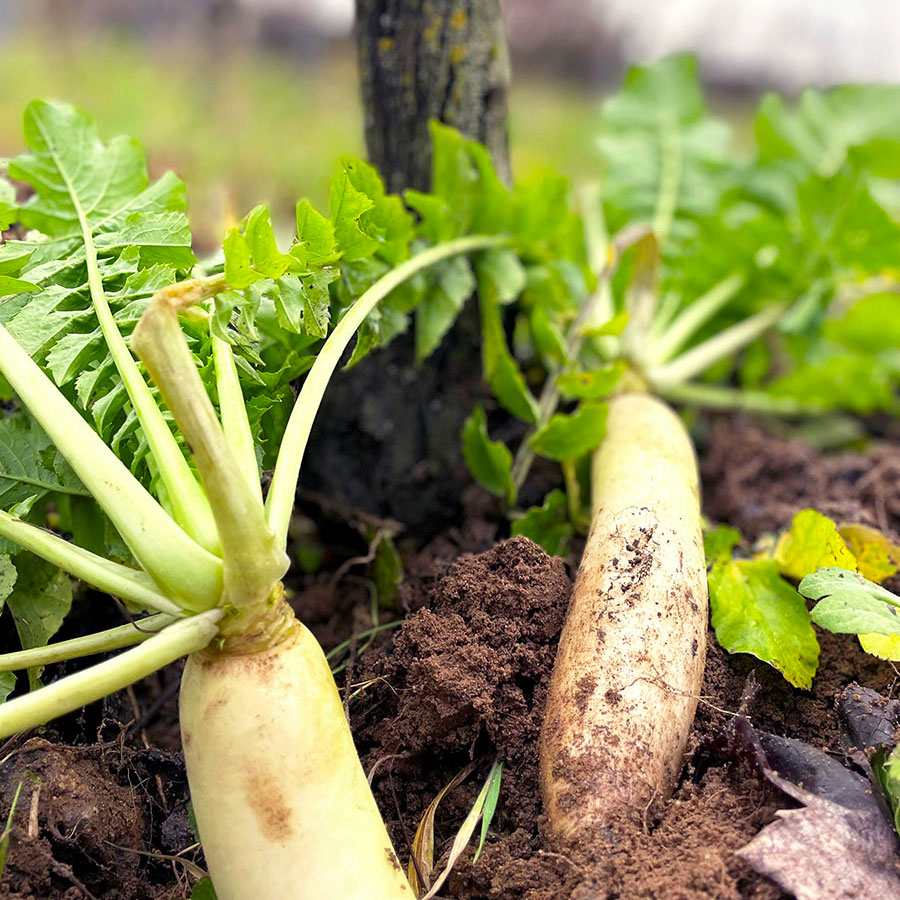REGENERATIVE AGRICULTURE

Regenerative agriculture
Regenerative viticulture draws inspiration from serious, scientific, documented agronomic practices. It is not against other systems; it strives to be “sustainable,” meaning, beyond producing quality products, it aims to protect the environment (soil, air, water—life ), its winegrowers, and of course, consumers.
Soil Conservation. A “living” soil can autonomously and sustainably support quality wine production.
Herbicides pollute; grass covers or plowing offers picturesque manicured vineyards, but these techniques also kill soil life. They isolate a superficial layer of a few centimeters of soil. Over seasons and years, the “vertical” dimension disappears, organic matter is lost, and the soil ceases to function.

Aurélien SCHLIENGER
Aurélien SCHLIENGER, head of cultivation at the BAUDRY & DUTOUR domaines, has thus reexamined standard practices. A delicate balance is sought between cooperation and competition, a principle that underpins, for example, permaculture.
The idea is to sow a wide variety of plants between rows, forming a permanent vegetative cover, each contributing to the system: vertical growth, nitrogen fixation from the air, soil cover… To control their growth and avoid excessive competition, mowing is avoided, and plants are rotated.
Beyond the benefits of a living soil, it is observed that it withstands adversity better than bare soil. It is shielded from direct radiation by its vegetation, its water retention capacity is enhanced, thus it better resists drought, and it also withstands erosion from heavy rainfall.
Finally, if adapting to climate change is a necessity, participating in collective efforts to curb the quantity of greenhouse gases in the atmosphere is vital: a living soil captures carbon and stores it by creating organic matter.

Landscape conservation
To have the necessary seeds for the numerous sowings between vine rows, we mobilize our plots of land to alternately grow fava beans, peas, sunflowers, and other crops like rye or buckwheat and produce our own seeds with a focus on integrating our overall approach. This is true crop rotation ensuring biodiversity and fertile soils.
Arrangements around plots (hedges, grassy strips, ditches, dry stone walls…) promote macro and microbiological life and help maintain insects, birds, bats… valuable allies in combating other vine pests. We redesign plots, plant trees, and replant hedges lost during land consolidation..

Preserve the essence of nature
Lastly, it is important to preserve the essence of nature.
We prioritize “biology” over any other type of intervention.
It all begins with observation. Knowing the environment, knowing the conditions, understanding the interactions before acting. The means of control we prioritize involve living organisms. Here we talk about biological control, bio-protection, even stimulating the plant’s natural defenses. The goal is to maintain “natural” balances.
All our efforts aim to limit inputs, organic or not, both in the vineyard and in the cellar. Philibert VALENTE, our cellar master, works specifically on drastically reducing sulfur doses.
